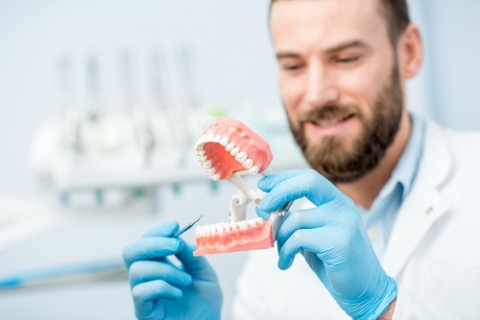The temporomandibular joint, or TMJ, is what connects your jaw to your skull. It works as a sliding hinge that can be felt by placing your hands in front of both ears on either side of the face. According to the TMJ Association, disorders involving the TMJ are poorly understood, even though 12 percent of the American population have them. 
Natural Solutions for TMJ Disorder
The National Institute of Health recommends a conservative approach when treating TMJ disorders. Simple, reversible treatments should be attempted first before considering aggressive, permanent options, according to Dr. John Pappas, DDS, of Arcadia Dental Arts in Phoenix, Arizona.
“Every time you talk, swallow, chew, yawn or laugh, your TMJ is in use,” he said. “Sometimes, something as simple as correcting posture or learning exercises for your jaw can bring huge relief to this overused joint.”
Surgery for TMJ Disorder
Often hailed as a last resort, jaw surgery is sometimes used when all other treatment options have failed or the condition is so severe that other treatments are unlikely to be effective. For some, the pain associated with a TMJ disorder can be debilitating.
There are four different surgeries often used to correct these jaw problems: arthrocentesis, arthroscopic, open-joint arthroplasty and total joint replacement. In arthrocentesis, fluid in the jaw is removed in order to test for signs of disease, or medication is injected into the jaw. This is not technically a surgery since no incision is made. Arthroscopic surgery involves removing scar tissue and cleaning out the joint area. This surgery is used when there is something inhibiting jaw function. In open-joint arthroplasty, the parts of the joint are repaired or repositioned. Sometimes this procedure is used to replace the articular disc responsible for cushioning the jaw. Finally, total joint replacement is just what it sounds like and involves completely replacing the joint. This surgery is very rarely performed.
Oral Appliances for TMJ Disorder
Occlusal splints – sometimes called bite guards, oral appliances, bite splints or oral orthotics – can be a source of relief for many TMJ disorder patients, according to Pappas.
“You would be surprised at the number of people who clench or grind their teeth in their sleep without even realizing it,” he said. “For these patients, an oral appliance can bring relief from symptoms by eliminating the contact made from grinding or clenching.”
Oral appliances, worn like a mouth guard, also help decompress the joint and align the jaw, said Pappas. They are worn during sleep, but for those with more severe conditions, daytime use can be helpful.
Each person’s TMJ disorder affects them differently. Not only do symptoms vary from one patient to the next, but the success of each treatment can also depend on so many individual factors that there is simply no one-size-fits-all solution, said Pappas.
